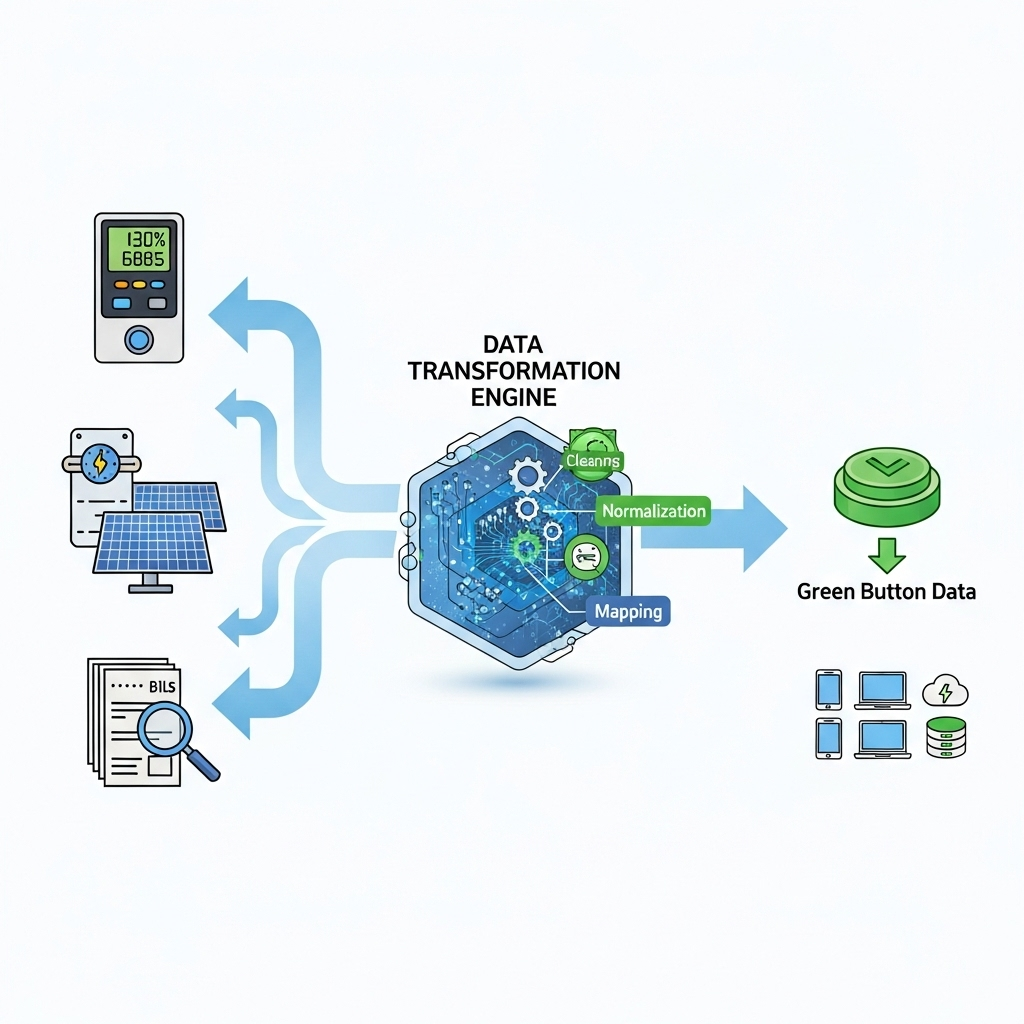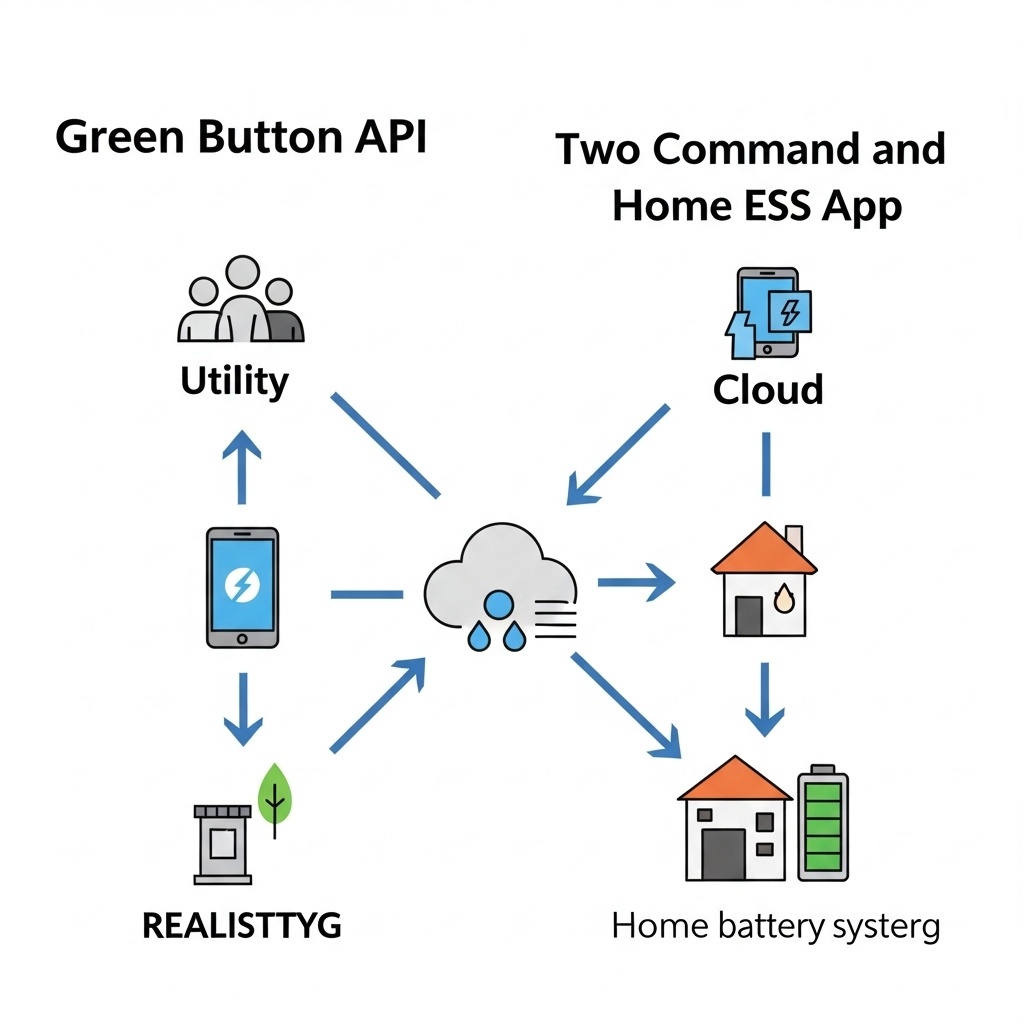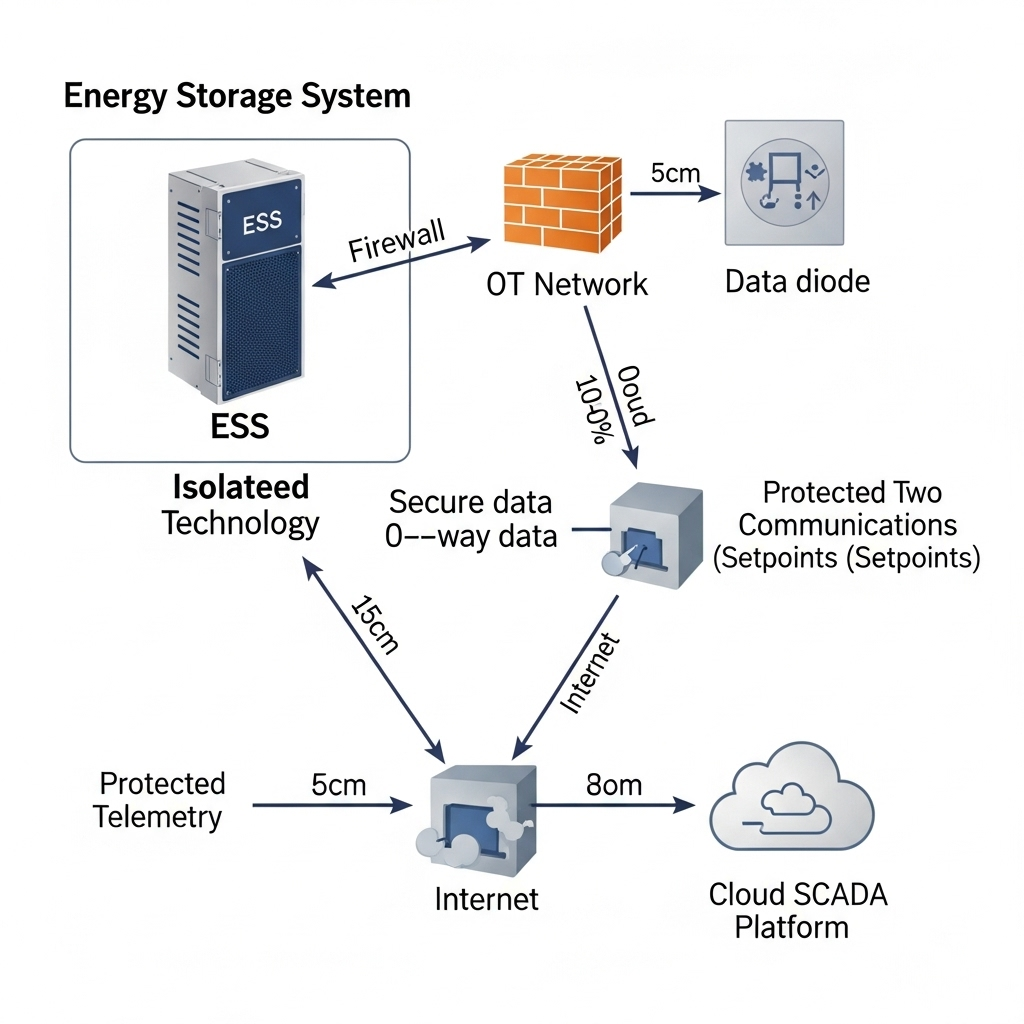The Green Button initiative represents a significant step toward a standardized energy future. It provides consumers and third-party services with secure, easy access to utility data. This access is fundamental for optimizing energy use, integrating renewable sources like solar, and managing energy storage systems effectively. However, the path to successful Green Button implementation is filled with data mapping challenges. Mapping data from a utility's native format to the Green Button standard is a complex task where small errors can have large consequences.
Avoiding these pitfalls is not just a technical exercise; it's a strategic imperative. Accurate data interchange fuels innovation, empowers consumers, and builds a more resilient grid. This article outlines nine common data mapping pitfalls and offers practical advice to help your organization navigate the implementation process smoothly.
Understanding the Green Button Standard Correctly
Many implementation issues begin with a superficial understanding of the standard itself. A thorough grasp of its nuances is the foundation for a successful project.
1. Misinterpreting Data Fields and Units
One of the most frequent errors is the misinterpretation of data fields. For instance, mapping a source field representing peak demand in kilowatts (kW) to a Green Button field intended for energy consumption in kilowatt-hours (kWh) creates fundamentally flawed data. Similarly, confusion between different units of measure or inconsistent use of multipliers (e.g., using 'k' for kilo) can corrupt the entire dataset. These errors undermine the very purpose of standardization, making the data unusable for analysis or for applications like sizing a home battery system.
2. Overlooking Version and Dialect Differences
The Green Button standard is not a single, static document. It has different 'dialects,' such as 'Download My Data' for file downloads and 'Connect My Data' for automated data exchange. Each has specific requirements. Furthermore, the standard evolves, with new versions introducing changes. A project that maps to an outdated version or fails to account for the specific dialect being implemented will face interoperability problems. It's crucial to identify and adhere to the precise version and specification required for your application.
3. Assuming a 'One-Size-Fits-All' Schema
Utilities often have unique billing cycles, rate structures, and metering technologies. Assuming that a single, rigid mapping template will work for all data sources is a recipe for failure. A flexible mapping strategy is necessary to accommodate variations. This involves creating a mapping logic that can handle conditional transformations, adapt to different source schemas, and gracefully manage exceptions where source data does not fit neatly into the Green Button format. As the International Renewable Energy Agency (IRENA) notes in its report, Grid Codes for Renewable Powered Systems, standards like IEC 62056 for electricity metering data exchange provide a basis, but real-world implementation requires adapting these high-level guidelines to specific operational contexts.
Tackling Technical and Implementation Hurdles
With a solid understanding of the standard, the focus shifts to the technical execution. This is where data integrity and system performance are made or broken.
4. Inadequate Data Validation and Cleansing
Source data is rarely perfect. It can contain null values, duplicates, out-of-range readings, or other anomalies. Pushing this 'dirty' data directly into the Green Button format without validation is a critical mistake. A robust implementation must include a pre-processing stage where data is cleansed and validated. This involves setting up rules to flag or correct impossible values (e.g., negative consumption), fill gaps where appropriate, and ensure all required fields are populated before the mapping process begins.
5. Poor Handling of Time Zones and Daylight Saving
Energy data is time-series data, making time stamps critical. A common pitfall is the incorrect handling of time zones and daylight saving time (DST) transitions. If a utility's source data is in a local time zone without an offset, and the mapping process fails to convert it correctly to Coordinated Universal Time (UTC), the data can be skewed by an hour or more. The best practice is to standardize all time-series data to UTC as early as possible in the process to eliminate ambiguity and ensure consistency across all records.
6. Neglecting Scalability and Performance
A data mapping solution that works for a few thousand customers may fail spectacularly when scaled to millions. Many projects underestimate the volume of data generated by smart meters, which can record data every 15 minutes or even more frequently. This requires a mapping architecture designed for high throughput and low latency. Neglecting performance can lead to processing backlogs, slow API responses, and a poor user experience for applications relying on the Green Button data feed. The growing need for real-time operational data, as highlighted by the IEA's report on Integrating Solar and Wind, underscores the importance of building scalable and responsive data systems from the start.
Addressing Data Quality and Granularity
The final set of pitfalls relates to the intrinsic characteristics of the data itself. The quality and granularity of the source data directly impact the value of the final Green Button output.
7. Mismatched Data Granularity
A frequent challenge is mapping data between different levels of granularity. For example, if the source system provides hourly consumption data, but the Green Button application requires 15-minute intervals, you cannot simply invent the missing data points. The mapping must reflect the lowest common denominator of detail. Conversely, aggregating 15-minute data into hourly summaries can lead to a loss of valuable information needed for advanced applications like demand response analysis. The mapping strategy must clearly define how to handle these mismatches without losing data integrity.
| Source Granularity | Target Granularity | Mapping Action | Potential Pitfall |
|---|---|---|---|
| 15-minute intervals | Hourly | Aggregation (Summing four 15-min reads) | Loss of peak demand information within the hour. |
| Hourly | 15-minute intervals | Distribution (Dividing the hourly read by four) | Creates false precision; data is not real. |
| Daily | Hourly | Not possible without modeling | Generated data is an estimate, not a measurement. |
8. Inconsistent or Missing Historical Data
Applications using Green Button data often rely on historical trends for forecasting, system sizing, and performance analysis. However, source systems may have gaps in their historical data due to meter change-outs, communication failures, or data purges. A mapping process that ignores these gaps or fails to represent them correctly can lead to flawed analyses. For instance, sizing a solar and battery storage system requires accurate historical load profiles. Inaccurate data can lead to a poorly performing or incorrectly sized system. The value of understanding solar storage performance metrics is directly tied to the quality of the underlying consumption data provided through standards like Green Button.
9. Ignoring Data Context and Metadata
The numbers themselves are only part of the story. Metadata—data about the data—provides crucial context. This includes information like the meter ID, the service address, the applicable rate plan, and the type of service (e.g., solar net metering). A mapping process that strips out or fails to correctly map this metadata reduces the utility of the data. For example, without rate plan information, it is impossible to accurately calculate cost savings. The increasing focus on corporate sustainability reporting, as noted in the IEA's Energy and AI report, demands this level of contextual detail to accurately track and report emissions from electricity consumption.
Moving Forward with Confidence
Implementing the Green Button standard is a powerful move toward a more transparent and efficient energy ecosystem. By anticipating these nine data mapping pitfalls, your organization can build a robust, accurate, and scalable solution. A meticulous approach to data mapping ensures that the data you provide is not just compliant but truly valuable. This unlocks new opportunities for energy management, empowers customers, and paves the way for the seamless integration of distributed energy resources like solar and storage into the grid.
Frequently Asked Questions
What is the primary goal of the Green Button initiative?
The primary goal is to empower energy consumers by providing them with easy and secure access to their own energy usage information in a standardized, machine-readable format. This enables a marketplace of applications and services that can help consumers make more informed energy decisions.
How does data mapping relate to Green Button implementation?
Data mapping is the core technical process of a Green Button implementation. It involves translating a utility’s internal, proprietary data structures and formats into the standardized XML format defined by the Green Button standard. The accuracy of this mapping determines the quality and usability of the final data.
Can poor data mapping affect the performance of an energy storage system?
Absolutely. Energy storage systems, especially residential ones, rely on accurate historical energy consumption data to optimize their charging and discharging cycles. If the Green Button data used to configure the system is flawed due to poor mapping (e.g., incorrect time stamps or consumption values), the system may not charge at the cheapest times or discharge effectively during peak hours, reducing its economic and operational value.





Leave a comment
All comments are moderated before being published.
This site is protected by hCaptcha and the hCaptcha Privacy Policy and Terms of Service apply.